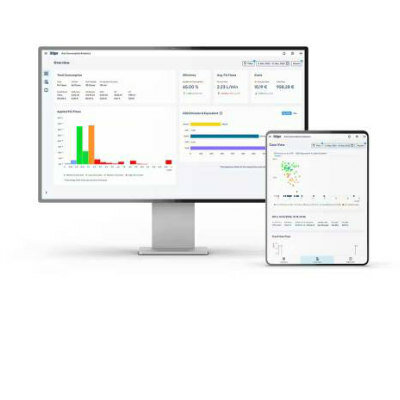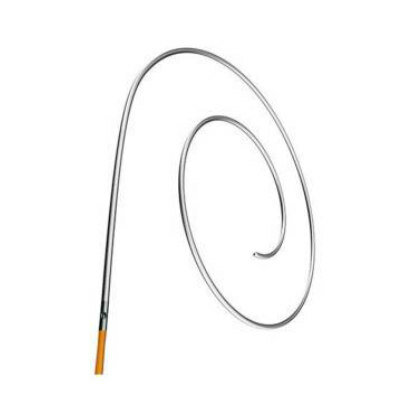Global POC Diagnostics Market Driven by Growing Demand for Portable and Handheld Near-Patient Devices
|
By HospiMedica International staff writers Posted on 20 Dec 2022 |

Point of care (POC) diagnostics is medical diagnostic testing that is performed at or near the POC, and at the place and time of patient care. POC diagnostics includes blood glucose testing, rapid coagulation testing, drugs of abuse screening, blood gas and electrolyte analysis, quick cardiac marker diagnostic, pregnancy testing, infectious disease testing, cholesterol screening, hemoglobin diagnostic, etc. POC diagnostic testing differs from traditional diagnostics that is restricted to the laboratory. POC diagnostic tests can be performed at the bedside and brings the test immediately to the patient. POC diagnostic testing raises the likelihood of the patient receiving the test results quickly and improves clinical management. Portable and handheld instruments are used in POC diagnostics, enabling the test results to be shared quickly with the patients. It helps in the rapid detection of analytes near the patient, facilitates better disease diagnosis, monitoring, and management, and enables quick medical decisions. POC diagnostics plays a vital role in patient management by reducing the time to treatment.
The COVID-19 outbreak led to increased demand for POC diagnosis. This has been accompanied by the increasing incidence of chronic and infectious diseases globally. As a result, there has been growing demand for portable, transportable, and handheld devices that is fueling the growth of the POC diagnostics market. In addition, the increase in technological advancements has also contributed significantly to the market growth. The global POC diagnostics market is projected to grow at a CAGR of 11.1% from USD 39.91 billion in 2022 to USD 93.21 billion by 2030, driven by the rising incidence of chronic diseases such as cardiovascular disorders, diabetes, and infectious diseases, as well as an increasing geriatric population. These are the latest findings of Precedence Research (Ottawa, Canada), a market research firm.
Rapid technological advancements such as the emergence of cloud-based deep learning systems and chip technology miniaturization are expected to expand the applications of POC diagnostics. For instance, lab-on-a-chip technology is now used at the POC. The development of nanoparticle-based POC technology has also attracted the attention of the market players and helped doctors to take advantage of nanoparticles for the diagnosis of various chronic conditions. The market players are adopting modern technologies such as artificial intelligence (AI) to produce more efficient products and are focusing on integrating ELISA into products for diagnosing infectious diseases. However, the high cost of product development due to various technology areas depending upon the test type could hamper market growth.
Based on product, the blood glucose monitoring segment dominates the POC diagnostics market with the highest revenue share due to increasing demand for products for monitoring blood sugar levels and growing preference for home glucose testing. On the other hand, the infectious diseases segment is expected to register a promising CAGR during the forecast period due to the rising prevalence of various contagious diseases. Based on end user, the hospital bedside segment dominates the POC diagnostics market with the highest revenue share due to the rising prevalence of chronic diseases which require long-term care and frequent monitoring. The increasing awareness about the availability of cost-effective and highly innovative POC diagnostics creates a positive outlook for the market. On the other hand, the urgent care & retail clinics segment are expected to register a promising CAGR over the coming years due to the growing number of clinics and urgent care centers.
Based on region, North America dominated the global POC diagnostics market with the largest revenue share due to the high prevalence of lifestyle diseases, increasing awareness of self-testing and home care kits, and rapid technological advancements in the region. On the other hand, the Asia-Pacific market for POC diagnostics is expected to register a promising CAGR during the forecast period due to the increasing number of market players and growing use of POC diagnostics in the developing countries.
Related Links:
Precedence Research
Latest Business News
- Philips and Masimo Partner to Advance Patient Monitoring Measurement Technologies
- B. Braun Acquires Digital Microsurgery Company True Digital Surgery
- CMEF 2025 to Promote Holistic and High-Quality Development of Medical and Health Industry
- Bayer and Broad Institute Extend Research Collaboration to Develop New Cardiovascular Therapies
- Medtronic Partners with Corsano to Expand Acute Care & Monitoring Portfolio in Europe
- Expanded Collaboration to Transform OR Technology Through AI and Automation
- Becton Dickinson to Spin Out Biosciences and Diagnostic Solutions Business
- Boston Scientific Acquires Medical Device Company SoniVie
- 2026 World Hospital Congress to be Held in Seoul
- Teleflex to Acquire BIOTRONIK’s Vascular Intervention Business
- Philips and Mass General Brigham Collaborate on Improving Patient Care with Live AI-Powered Insights
- Arab Health 2025 Celebrates Landmark 50th Edition
- Boston Scientific Acquires Medical Device Company Intera Oncology
- MEDICA 2024 to Highlight Hot Topics of MedTech Industry
- Start-Ups To Once Again Play Starring Role at MEDICA 2024
- Boston Scientific to Acquire AFib Ablation Company Cortex
Channels
Critical Care
view channel
Light-Based Technology to Measure Brain Blood Flow Could Diagnose Stroke and TBI
Monitoring blood flow in the brain is crucial for diagnosing and treating neurological conditions such as stroke, traumatic brain injury (TBI), and vascular dementia. However, current imaging methods like... Read more
AI Heart Attack Risk Assessment Tool Outperforms Existing Methods
For decades, doctors have relied on standardized scoring systems to assess patients with the most common type of heart attack—non-ST-elevation acute coronary syndrome (NSTE-ACS). The GRACE score, used... Read moreSurgical Techniques
view channel
Minimally Invasive Endoscopic Surgery Improves Severe Stroke Outcomes
Intracerebral hemorrhage, a type of stroke caused by bleeding deep within the brain, remains one of the most challenging neurological emergencies to treat. Accounting for about 15% of all strokes, it carries... Read more
Novel Glue Prevents Complications After Breast Cancer Surgery
Seroma and prolonged lymphorrhea are among the most common complications following axillary lymphadenectomy in breast cancer patients. These postoperative issues can delay recovery and postpone the start... Read morePatient Care
view channel
Revolutionary Automatic IV-Line Flushing Device to Enhance Infusion Care
More than 80% of in-hospital patients receive intravenous (IV) therapy. Every dose of IV medicine delivered in a small volume (<250 mL) infusion bag should be followed by subsequent flushing to ensure... Read more
VR Training Tool Combats Contamination of Portable Medical Equipment
Healthcare-associated infections (HAIs) impact one in every 31 patients, cause nearly 100,000 deaths each year, and cost USD 28.4 billion in direct medical expenses. Notably, up to 75% of these infections... Read more
Portable Biosensor Platform to Reduce Hospital-Acquired Infections
Approximately 4 million patients in the European Union acquire healthcare-associated infections (HAIs) or nosocomial infections each year, with around 37,000 deaths directly resulting from these infections,... Read moreFirst-Of-Its-Kind Portable Germicidal Light Technology Disinfects High-Touch Clinical Surfaces in Seconds
Reducing healthcare-acquired infections (HAIs) remains a pressing issue within global healthcare systems. In the United States alone, 1.7 million patients contract HAIs annually, leading to approximately... Read moreHealth IT
view channel
















